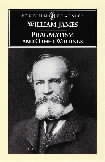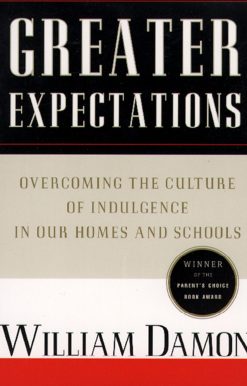Infinite Vision: How Aravind Became the World’s Greatest Business Case for Compassion
| by |
|---|
16.00 JOD
Please allow 2 – 5 weeks for delivery of this item
Description
When a crippling disease shattered his lifelong ambition, Dr. V (Venkataswamy) chose an impossible new dream: to cure the world of blindness. The tiny clinic he founded in India defied conventional business logic and is now the largest provider of eye care on the planet. At Aravind, patients choose whether to pay or not. Millions are treated for free, yet the organization remains stunningly self-reliant. Serving everyone from penniless farmers to the president, it delivers world-class outcomes at less than a hundredth of what similar services cost in advanced nations. Its model is emulated by organizations everywhere from Rwanda to San Francisco. Infinite Vision uncovers the radical principles behind Aravind’s baffling success. Charged with profound insights and stories, it draws readers to the heart of Dr. V’s selfless vision, proving how choices that seem quixotic can, when executed with compassion and integrity, yield incredible results—results that can light the eyes of millions.
Additional information
| Weight | 0.5 kg |
|---|---|
| Dimensions | 2.3 × 14.1 × 21.6 cm |
| PubliCanadation City/Country | USA |
| by | |
| Format | Paperback |
| Language | |
| Pages | 336 |
| Publisher | |
| Year Published | 2011-11-7 |
| Imprint | |
| ISBN 10 | 1605099791 |
| About The Author | Pavithra K. Mehta is an award-winning filmmaker and journalist. She is a board member of the Aravind Eye Foundation and CharityFocus and coeditor of the latter’s inspirational news service, DailyGood. Dr. V. is her granduncle. Suchitra Shenoy has more than a decade of experience in the social sector, most recently at the Monitor Group, where she was a founding member of Monitor Inclusive Markets. |
“Reveals the power of a model that combines business discipline with compassion. May the wisdom of Dr. V and Aravind shared here inspire many such initiatives for the well-being of future generations.” —Muhammad Yunus, Nobel Peace Prize Laureate and founder, Grameen Bank “A must-read for anyone interested in leadership, service, and the building of institutions that release the best energies of the human spirit.” —Jacqueline Novogratz, founder and CEO, Acumen Fund, and author of The Blue Sweater “Aravind may be a case study for MBA students and a model social business, but to me this book told a story with elegance, clarity, and intimacy.” —Fred de Sam Lazaro, Correspondent, PBS NewsHour “In the world of blindness Dr. V has performed a miracle.” —Ram Dass, author of Be Here Now and cofounder, Seva Foundation “In an increasingly complex world where making money and doing good are dichotomized, this thought-provoking story of Dr. V and the Aravind Eye Care System should be required reading for current and future business and charity leaders. Only by breaking down the false separation between business practices and community needs will our societies prosper.” —Dr. Pamela Hartigan, Director, Skoll Centre for Social Entrepreneurship, University of Oxford, and coauthor of The Power of Unreasonable People “Most business books completely fail to communicate the human and intuitive side of organizational and business success. This book explores both very effectively while describing practical achievements as well. If you aspire to combine entrepreneurship and innovation with higher life purpose, then there can be no better guide than Infinite Vision and the life of Dr. V. But beware. Once you are ensnared it will be impossible to escape!” —Tim Brown, CEO, IDEO, and author of Change by Design “A deftly crafted book that relates how Aravind triumphed in business by focusing on compassion. It is rich with lessons that come to life through the vivid personalities of Aravind’s torchbearers—their insights on leadership and management forge a path forward for the social as well as corporate sectors. An important and compelling read.” —V. Kasturi Rangan, Malcolm P. McNair Professor of Marketing, Harvard Business School, and cofounder of the HBS Social Enterprise Initiative “A stirring account of how one man’s faith and pragmatism healed millions. Infinite Vision is a powerful reminder that any of us can overcome the most severe of obstacles and rise to unparalleled heights of spiritual and practical achievement.” —Huston Smith, Professor of Religion and Distinguished Adjunct Professor of Philosophy, Emeritus, Syracuse University, and author of The World’s Religions “Infinite Vision offers a lucid and moving account of the Aravind story while detailing its greatest lesson to the world: compassion, when focused with clear goals, thoughtful strategies, and sound management practices, can yield incredible results.” —Steve Hilton, President and CEO, Conrad N. Hilton Foundation “Those seeking inspiration from a spiritual journey or insight into innovative business practices—attributes not normally found in the same story—will benefit from this narration of a profoundly impactful adventure.” —Dr. Alfred Sommer, MHS, Dean Emeritus, Johns Hopkins Bloomberg School of Public Health “This is that rare book that informs you on how to put your compassion to work. Through the accessible genius of the Aravind model of business, you will find a gateway with a road map for you to find your own personal brand of compassion in your work and in your life.” —Dr. Mark S. Albion, cofounder, Net Impact, and author of True to Yourself and Making a Life, Making a Living “A story about an organizational marvel, this book is somehow internally illuminated. It has plot, poetry, and emotion—things you don’t expect from a business title. The writing pierces through management abstractions, and what remains is the rootedness of a family, the crazy-beautiful daring, the labor and the thrift, the sense of ‘what else is there to do?’” —Amulya Gopalakrishnan, columnist, Indian Express “Surgery, service, soul, and sustainability weave together in this inspiring true story. The messages of this book transcend health care and business—they speak to the potential that lives within each of us.” —Dr. William Stewart, cofounder, Institute for Health & Healing, California Pacific Medical Center, and author of Deep Medicine “Expertly weaves through the challenges and opportunities encountered in transforming a small eye clinic into the largest eye hospital in the world. This story is a gift to aspiring change makers and leaders everywhere. Its visionary protagonist is one of the real heroes of our times.” —Dr. Suzanne Gilbert, founding member, Seva Foundation, and Director, Center for Innovation in Eye Care |
|
| Table Of Content | Introduction: The Power and Paradox of Aravind Prologue Part I: The 5-Minute $15 Cure: On Efficiency and Compassion Chapter 1: Of Burgers and Blindness Chapter 2: When Free is Not Enough Chapter 3: This Case Won’t Fly Part II : Do The Work, Money Will Follow: On Sustainability and Selflessness Chapter 4: An Eye Doctor By Sheer Accident Chapter 5: Get Less, Do More Chapter 6: The Power of Creative Constraints Chapter 7: You Don’t Find People, You Build Them Chapter 8: The Question of the Greedy Doctor Part III: A Vast Surrender: On Innovation & Inner Transformation Chapter 9: Humankind is a Work-in-Progress Chapter 10: Dr. V’s Practices for a Perfect Vision Chapter 11: Manufacturing a Revolution Chapter 12: Maximize Service Not Profit Chapter 13: The Flip Side of a Visionary Part IV : Training Your Competition: On Replication and Self-Awareness Chapter 14: If We Can Do it So Can You Chapter 15: Aravind Is Like Kilimanjaro Chapter 16: Business, Politics and Prahalad’s Dare Chapter 17: Aravind in America Part V : How Do You Retire A Saint?: On Change and Integrity Chapter 18: Same Same but Different Chapter 19: All Will Pass from the Earth Chapter 20: The Bottom is Moving Up Chapter 21: A Place to Practice Truth Epilogue: Death’s Question Resources Notes Acknowledgments Name Index About the Authors Connecting the Aravind's Work |
| Excerpt From Book | INTRODUCTION THE POWER AND PARADOX OF ARAVIND His journal entries from the 1980s read as electrifying notes to self: Attachment to your village, your hospital, your state or country—that must go. You must live in your soul and face the universal consciousness. To see all as one. To have this vision and work with strength and wisdom all over the world. Perhaps the white-haired man with curiously gnarled fingers paused here for a moment before scrawling the next line. To give sight for all. THE IMPOSSIBLE RARELY deterred Dr. Govindappa Venkataswamy. As a young surgeon, he watched a crippling disease permanently twist and freeze his fingers out of shape. Those fingers went on to delicately perform more than 100,000 sight-restoring surgeries, but Dr. V, as he came to be known, would not stop there. In 1976, he founded Aravind, an eye clinic operating out of a family home in South India. He was 58 years old. Aravind was his post-retirement project, created with no money, business plan, or safety net. What it did have was 11 beds—and an oversized mission. Its mission was to eliminate curable blindness. At Aravind, if you could not pay for surgery, you did not have to. If you could not reach the clinic, its doctors would come to you. At first glance, it seemed a venture far too quixotic to be effective. But when intuitive goodness is pitted against unthinkable odds, it stirs the imagination and awakens possibility. Dr. V integrated a heart of service and deep spiritual aspiration with the best practices of business. In this way, he forged a high-volume, high-quality, and affordable approach to service delivery that would expand to put a serious dent in a problem of global proportions. Today, the Aravind Eye Care System is the largest and most productive blindness-prevention organization on the planet. During the last 35 years, its network of five eye hospitals in South India have treated more than 32 million patients and performed more than 4 million surgeries, the majority either ultrasubsidized or free.1 Think David and Goliath: a man stands up in all his devastating frailty, fights the good fight, and wins a victory for humanity. Aravind is luminous proof of what is possible in our world. Dr. V’s compassionate vision and the work of his 3,200-person team (including 21 ophthalmologists across three generations of his family) have captured the attention of individuals as diverse as Bill Clinton, England’s Princess Alexandra, and management icon Peter Drucker. The organization consults for Nobel laureate Muhammad Yunus and was visited by Google’s celebrity cofounder Larry Page; and a case study on Aravind’s work is mandatory reading for every MBA student at the Harvard Business School. In 2008 Aravind won the Gates Award for Global Health, the Hilton Humanitarian Prize followed in 2010, and in that same year Aravind’s chief executive officer made it to Time magazine’s list of the 100 most influential people in the world. None of this means that Aravind is a perfect organization. Its leaders are regular people who struggle, make mistakes, and chafe against their limitations. They are fallible like the rest of us, with only this difference: together, these ordinary individuals made a series of uncommon decisions and commitments that resulted in something extraordinary. In a country of 12 million blind, where the majority lives on less than $2 a day, Aravind ripped the price tag off of sight-restoring surgery, treating more than a third of its patients at no charge. Simultaneously, it insisted on financial self-reliance, resolving not to depend on government aid, private donations, or foreign funding. Even more curiously, in a move to preserve its patients’ dignity and self-esteem, Aravind allowed them to decide for themselves whether or not they would pay. In its self-selecting system, there are no eligibility criteria to be met, no income assessments done. A barefoot farmer can choose to pay for surgery, while the man destined to be president of India can opt to receive high-quality treatment for free (true story). It is a generous arrangement, all the more intriguing for being vigorously profitable. Aravind is a nonprofit organization that consistently runs a substantial operating surplus. Its patient services and major expansion projects are entirely self-funded. In another paradoxical twist, Aravind’s marketing strategies target those least able to pay. The organization invests tremendous energy in bringing eye care to villagers too poor to seek out its services. Its policies ensure that all patients get the same high standard of care. The same doctors work across both free and paid services, and patient outcomes hold their own in comparisons with those of the best hospitals in the world. In a recent like-for-like assessment of its surgical performance against the United Kingdom’s Royal College of Ophthalmologists, Aravind’s overall complication rates were found to be less than those of its British counterpart.2 Defying the assumption that high-quality surgery cannot be performed at high volumes, its doctors are among the most productive in the world. Aravind surgeons average 2,000 cataract surgeries a year, against the Indian average of 400 surgeries and the United States’ average of under 200.3 The efficiencies that enable this achievement help make Aravind one of the lowest-cost, highest-quality eye care systems in the world. Its focus on the penniless does not preclude a breadth or sophistication of services. Aravind’s hospitals attract not just the poor but also hundreds of thousands of individuals with the financial means to pick and choose between service providers across the country. It offers a comprehensive range of specialty care, covering everything from corneal ulcers to cancer of the eye. The organization also runs a global research foundation and a postgraduate teaching institute that has trained 15 percent of all ophthalmologists in India.4 Its short-term fellowships continue to attract residents from leading medical schools around the world (including the Johns Hopkins School of Medicine and the Massachusetts Eye and Ear teaching hospital of Harvard Medical School). Taking on a goal that far exceeds your capacity has a powerful side effect. It primes you to find allies everywhere. At Aravind, a global mission led to a counterintuitive commitment to training its competition. The organization works with other hospitals, many in its own backyard, helping them to replicate the Aravind model. Not only does it permit others to copy the very systems that give it a competitive advantage—it encourages them to do so. Aravind runs a training and consulting service that has worked with more than 270 hospitals and trained thousands of health care professionals from 69 different countries.5 This is a spirited organization that followed the dictates of mission into perilous territory—and lived to tell the tale. When the intraocular lens implant that revolutionized cataract surgery in the West proved too expensive to import for all of Aravind’s patients, the organization took a brave step. Against informed opinion and global pressure, it set up its own internationally certified manufacturing facility. Its high-quality implants dropped the price from $150 to $10, making the lenses affordable not just for its own patients but also for the rest of India and other developing countries as well. Today, its ophthalmic exports are indirectly responsible for improving surgical outcomes for millions of patients in more than 120 countries. These individual actions, amazing in themselves, collectively speak to something more. They are uplifting evidence that an organization with a social mission does not have to depend on external funding; or run at a loss; or make compromises in efficiency, scale, quality, or scope. In all these ways, Aravind is a glowing exception to the usual rules. Over the decades, numerous case studies and magazine articles have attempted to explain its success. Most of them seek to answer the same implicit question: How has Aravind reached its current scale and prosperity despite giving away specialized, high-quality services for free? The framing of that question tends to limit the scope of the answer. Aravind is an unconventional model that came into being not despite but because of the deep-seated compassion at its core. This is a model that demonstrates the power of integrating innovation with empathy, business principles with service, and outer transformation with inner change. From this perspective, a new line of inquiry emerges. How did Aravind design a model such that wealthy patients and those in greatest need benefit from each other? What values, experiences, and insights spurred its leaders to make the unexpected choices that they did? How did these choices influence the organization’s efficiency, sustainability, and scale? And, at a time when Western health care systems are in crisis and social enterprises are proliferating across multiple sectors, is Aravind an inspiring singularity or a repeatable miracle? These are some of the puzzles examined in this book. And at its core is a simple riddle that entwines them all: If Aravind is the extraordinary answer, what were Dr. V’s questions? To understand the Aravind model—what made it work and what continues to fuel its expansion and impact—one must look into the heart and mind of the visionary surgeon who set it all into motion. In that sense, this book is an invitation to walk a while with Dr. V, see the world as he saw it, meet the people who would join him, and catch a glimpse of the lives they touch. In the end, it is an invitation to experience a spark of that which drives our deepest intentions to action. To see all as one. To give sight for all. Ultimately, Dr. V’s vision and Aravind’s work draw an arc between the practical and the profound. This story lives on that arc. It is the tale of a revolutionary business model set in the developing world, focused on the sustainable delivery of eyesight. But it is also the journey of an unlikely hero with an impossible dream, whose story (not without its share of snarls and unresolved dilemmas) transcends its own specificity to speak of universal truths: To be of service to others is to serve ourselves. Our limitations do not define us. And embedded in the human spirit is a wisdom and strength that can rise to meet our greatest challenges. Together we can light the eyes of millions. |
Only logged in customers who have purchased this product may leave a review.
Related products
-
On backorder 2-5 Weeks to Arrive
10.99 JOD -
On backorder 2-5 Weeks to Arrive
15.00 JOD -
Low stock
25.00 JOD -
On backorder 2-5 Weeks to Arrive





Reviews
There are no reviews yet.